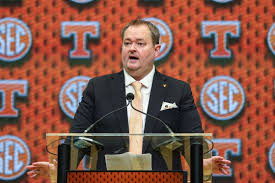Mike Tomlin has never been one for theatrics or headlines. His approach has always been about leading with purpose, discipline, and calculated control. So when the tension surrounding T.J. Watt’s contract negotiations with the Pittsburgh Steelers started to escalate, few outside the organization knew just how significant Tomlin’s role would become. While the front office handled the numbers and agents filled in the airwaves with speculation, it was the quiet influence of Mike Tomlin that ultimately became the steel thread holding the process together. Behind the scenes, the veteran head coach played a pivotal role—one of subtle power and steady leadership—that helped bring a resolution to one of the most important player disputes in recent Steelers history.
Watt’s status as a defensive powerhouse in Pittsburgh is not up for debate. He is the backbone of a defense that thrives on aggression, explosiveness, and discipline. He’s a leader by example, a relentless force who refuses to accept mediocrity. But the NFL, for all its drama and glory, is also a business. Watt’s production warranted a contract that matched his value, and that’s where things got sticky. For a while, it looked as if the Steelers might face a prolonged standoff with their star pass rusher. But what many didn’t realize was that Mike Tomlin was already at work behind closed doors, acting as a mediator, counselor, and bridge-builder between Watt, his representatives, and the Pittsburgh front office.
Tomlin’s leadership style has always been rooted in respect. He builds relationships with players not through favoritism but by investing time, trust, and understanding. He had long earned Watt’s trust, not by demanding loyalty, but by embodying the consistency and clarity every player craves in a head coach. So, when the talks became complicated, and when doubt started to creep into conversations, it was Tomlin who served as the voice of calm. He wasn’t barking orders or applying pressure. Instead, he was having quiet conversations with Watt—conversations that didn’t involve leverage or guarantees, but rather mutual vision and commitment to a shared goal.
Sources close to the situation revealed that Tomlin maintained regular communication with Watt throughout the offseason. Not in a pushy way, but in a manner that reminded Watt why Pittsburgh was home, why the black and gold mattered, and why trust could trump frustration. These were not strategy sessions about numbers or incentives—they were reminders of culture, legacy, and identity. Tomlin’s voice wasn’t just that of a coach; it was the voice of the franchise reminding its most dominant player that he belonged, and that he was valued beyond the stat sheet.
At one point during negotiations, there was speculation that Watt might consider withholding participation in team activities or even miss time as a protest. The idea of friction between the Steelers and one of their most essential players began to creep into headlines. But what many didn’t know was that Tomlin had already anticipated that possibility, and he’d taken proactive steps to ensure it wouldn’t reach that point. He empowered the front office to make the financial decisions while simultaneously nurturing Watt’s emotional connection to the organization. It wasn’t manipulation—it was stewardship.
Players talk about coaches who “get it.” For many in Pittsburgh, Tomlin has been that guy for years. He doesn’t pretend to have all the answers, but he knows how to ask the right questions and listen with intention. When Watt expressed concern about his value or the organization’s priorities, Tomlin listened. When Watt wondered if his loyalty would be reciprocated, Tomlin offered reassurance—not with promises, but with presence. In a league often defined by cold transactions and detached decision-making, Tomlin’s warmth and authenticity became his most powerful tools.
Steelers owner Art Rooney II and GM Omar Khan both reportedly leaned on Tomlin’s player relationships as they navigated the sensitive terrain of negotiating with Watt. There’s a delicate balance between asserting business priorities and maintaining locker room harmony. Tomlin helped them walk that tightrope. He knew that losing Watt’s trust—even temporarily—could ripple across the roster in damaging ways. And he wasn’t about to let that happen on his watch.
In fact, several teammates later admitted that Tomlin’s steady hand kept morale high during the uncertainty. Watt wasn’t isolated or ostracized. Instead, he was embraced, supported, and reassured—not just by teammates, but by a coach who refused to let contract drama define the team’s atmosphere. This isn’t the kind of detail that makes headlines or fills highlight reels, but it’s the exact kind of leadership that sustains a locker room through trying times.
Watt, for his part, remained respectful and composed throughout the process. His professionalism never wavered, even when frustration was no doubt bubbling beneath the surface. And when the deal finally came through—one that both sides could feel good about—it was Watt who publicly thanked the organization, his teammates, and yes, his coach. He made a point to acknowledge that his relationship with Tomlin remained “rock solid” throughout. That wasn’t just a throwaway quote—it was a subtle but powerful indication of who really helped hold the ship together.
And in classic Tomlin fashion, he didn’t spike the football after the deal was done. He didn’t take a victory lap or seek credit. In fact, he downplayed his role entirely. “We’re just about the business of winning,” he said in a brief post-deal interview. “T.J.’s a big part of that, and we’re glad it’s worked out.” That’s vintage Tomlin—no ego, no theatrics, just mission-focused leadership.
But for those who truly understand the NFL and the unique culture of the Steelers, Tomlin’s fingerprints were all over this resolution. It was his credibility with Watt, his ability to listen, his refusal to let personal tensions fester, and his consistent messaging about what it means to be a Steeler that helped bring this contract saga to a peaceful end. The front office made the numbers work, but it was Tomlin who helped keep the relationship intact long enough for that to matter.
Watt’s new deal doesn’t just ensure that the Steelers’ defense remains elite for the foreseeable future—it also reinforces a broader truth about the Pittsburgh Steelers: they still operate like a family. And Mike Tomlin, in many ways, is the father figure who keeps that family from fracturing when money and emotions collide.
In an era when many head coaches are becoming increasingly distanced from their players—either by design or by burnout—Tomlin’s approach remains refreshingly intimate. He leads with character, not charisma. He builds loyalty not through coercion, but through connection. And in this latest chapter involving one of the NFL’s most dominant defenders, he once again proved that leadership doesn’t always require a loud voice. Sometimes, it just requires the right voice, at the right time.
The Steelers are better today not just because they retained T.J. Watt, but because they once again demonstrated that football is about more than talent and contracts. It’s about people, trust, and culture. And at the center of it all, Mike Tomlin stood tall—not with headlines, but with quiet power. The power behind the pen.



